Sustainable Cotton Tour - Part 2
I thought that this would be a one blog post event but there was a lot going on. In the last blog post I wrote about our morning watching cotton being harvested and ginned. After touring the gin we loaded the two buses and drove to the Cardella Winery in Mendota where we had a great catered lunch. I admired the table decorations. We listened to speakers after lunch. Steve Melanca spoke about the movement he created, "My Job Depends on Ag" to raise awareness of how important agriculture is to the California economy. More about this in a future blog post.
I admired the table decorations. We listened to speakers after lunch. Steve Melanca spoke about the movement he created, "My Job Depends on Ag" to raise awareness of how important agriculture is to the California economy. More about this in a future blog post.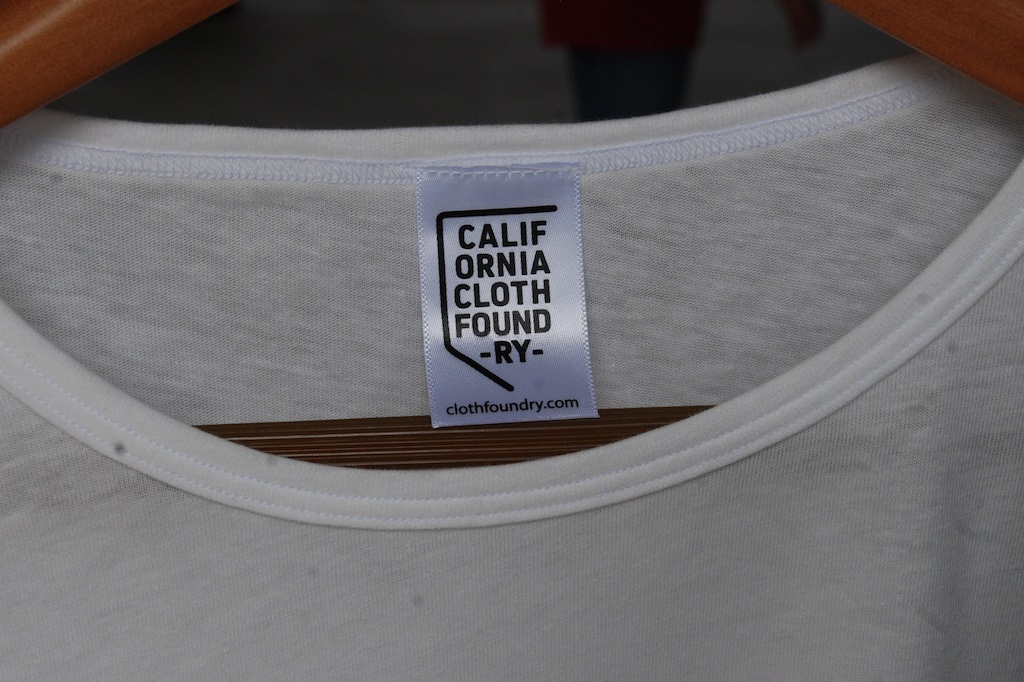 Lydia Wendt of California Cloth Foundry spoke and showed products that are produced from Cleaner Cotton and natural dyes.
Lydia Wendt of California Cloth Foundry spoke and showed products that are produced from Cleaner Cotton and natural dyes.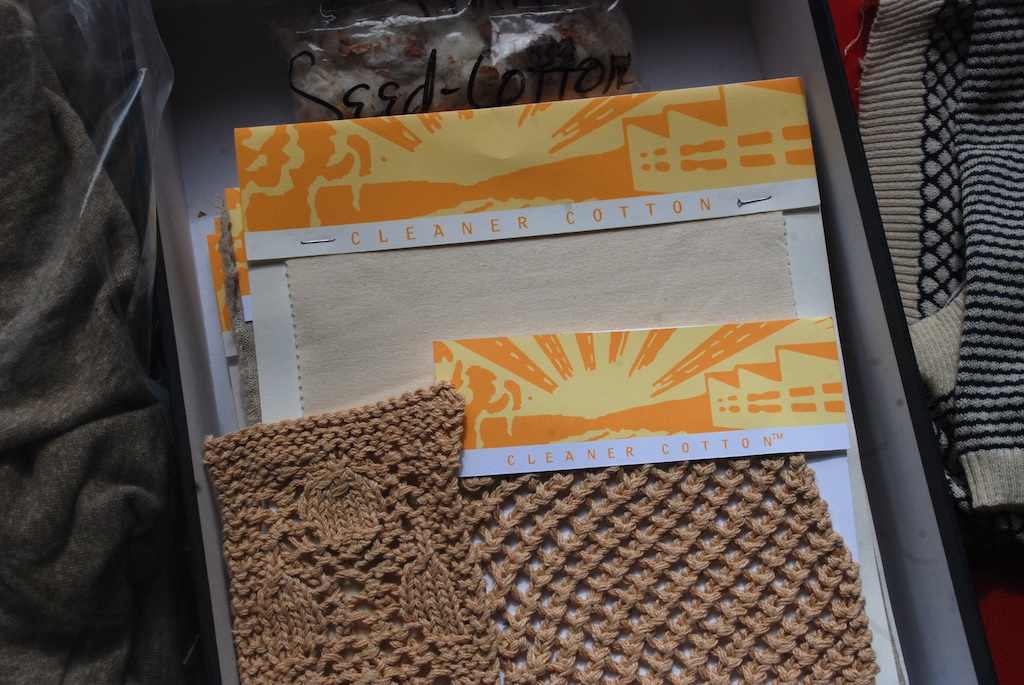 Lynda Grose spoke more about bringing Cleaner Cotton into the supply chain of manufacturers and designers.
Lynda Grose spoke more about bringing Cleaner Cotton into the supply chain of manufacturers and designers. 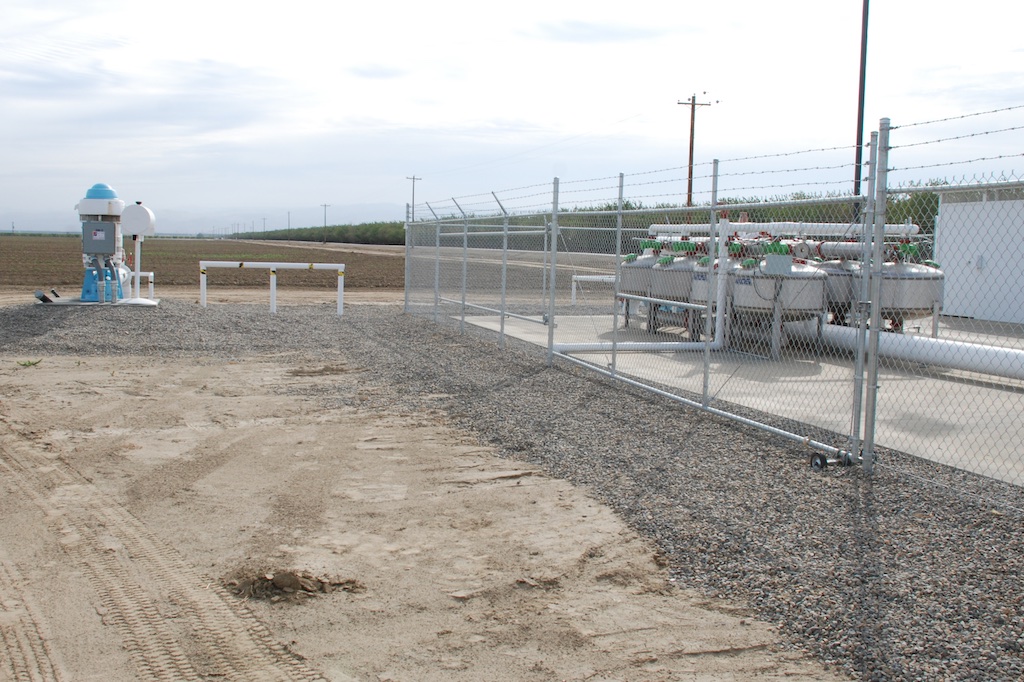 We got back on the bus and stopped not far from the winery to listen to Dan Munk, a UC Cooperative Extension Farm Advisor discuss cotton production and water use of cotton and other crops. Cotton requires 28" of water in a growing season. Nut and fruit trees require 48-52" of water. The western side of the San Joaquin Valley is in a rain shadow created by the mountains and receives only about 12" of rain annually. Surface water use has been curtailed or drastically reduced over the last few years of California's drought so people are relying more on ground water.The most available ground water is salty, coming from what was an old sea bed so wells must go down 300-500 feet for clear water. This is not only very costly but now some areas are having to deal with subsidence--where the ground is actually sinking from the loss of ground water. This becomes a major issue when you consider the effects on that on concrete roadways and major water canals.
We got back on the bus and stopped not far from the winery to listen to Dan Munk, a UC Cooperative Extension Farm Advisor discuss cotton production and water use of cotton and other crops. Cotton requires 28" of water in a growing season. Nut and fruit trees require 48-52" of water. The western side of the San Joaquin Valley is in a rain shadow created by the mountains and receives only about 12" of rain annually. Surface water use has been curtailed or drastically reduced over the last few years of California's drought so people are relying more on ground water.The most available ground water is salty, coming from what was an old sea bed so wells must go down 300-500 feet for clear water. This is not only very costly but now some areas are having to deal with subsidence--where the ground is actually sinking from the loss of ground water. This becomes a major issue when you consider the effects on that on concrete roadways and major water canals.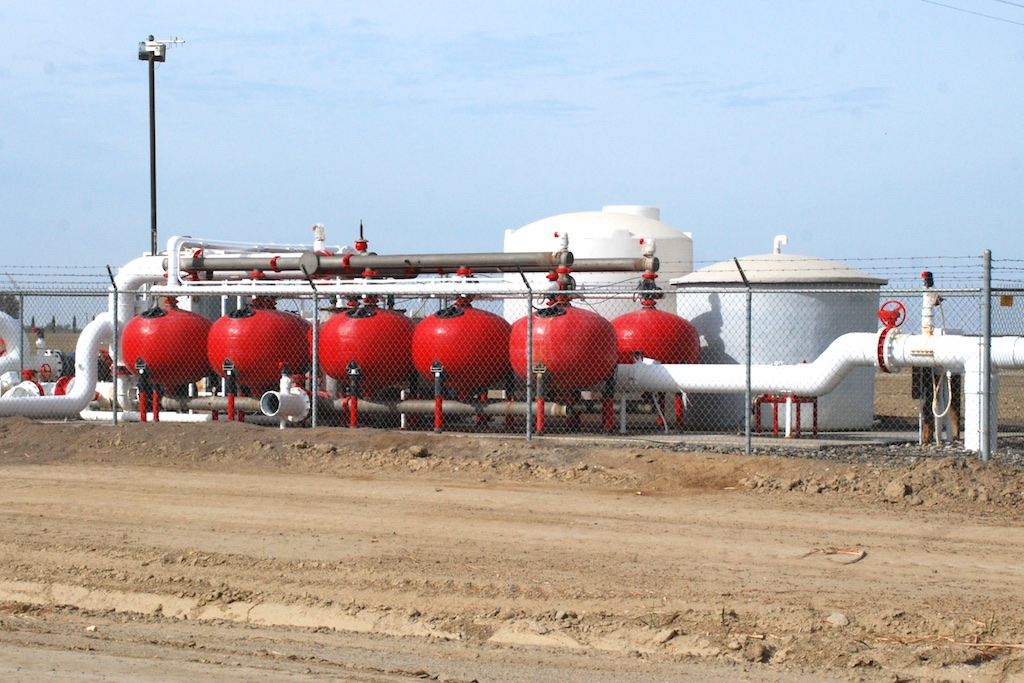 No matter the water source, when drip systems are used filtration systems (shown in the two photos above) are vital to maintain the systems in working order. Back to the buses.
No matter the water source, when drip systems are used filtration systems (shown in the two photos above) are vital to maintain the systems in working order. Back to the buses.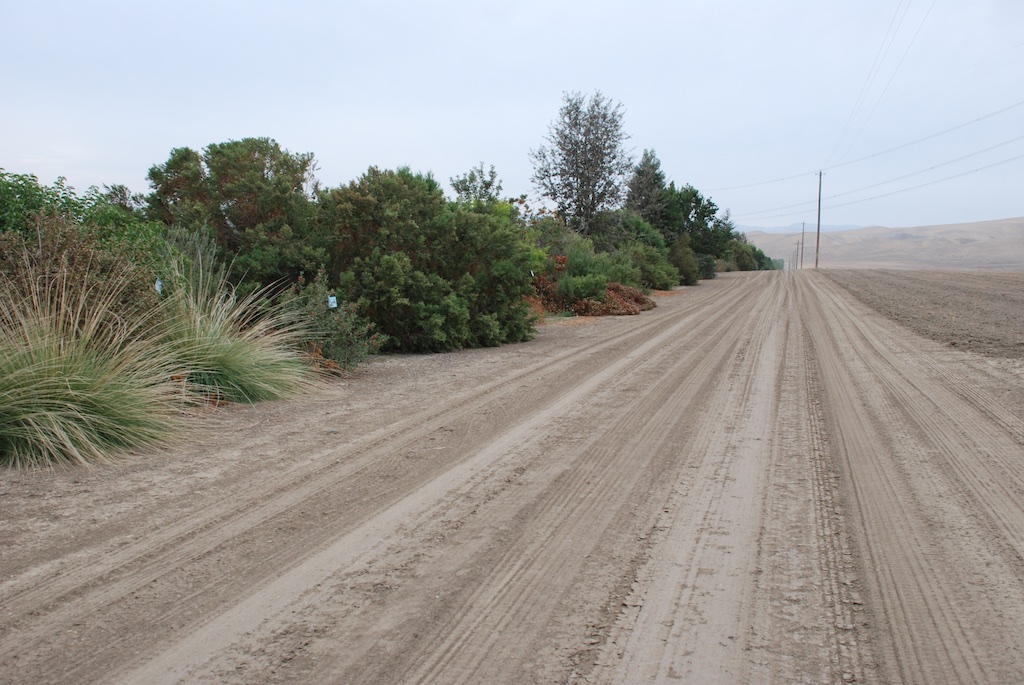 The last stop was at Frank Williams and Mark Fickett's colored cotton field. We learned about the perennial hedgerow that was planted to increase biodiversity and beneficial insect activity. Unfortunately it hasn't really been tested because since the hedgerow was planted there hasn't been enough water to plant these fields. Hillary Sardinas also spoke about her passion and recent PhD thesis, the huge variety of native bees that are important components of the ecosystem and provide more complete pollination for cotton crops. She represents the Xerces Society for Invertebrate Conservation (think Audobon Society for insects) and was fun to listen too. I had no idea that we had all these native bees and that they mostly live in ground burrows.
The last stop was at Frank Williams and Mark Fickett's colored cotton field. We learned about the perennial hedgerow that was planted to increase biodiversity and beneficial insect activity. Unfortunately it hasn't really been tested because since the hedgerow was planted there hasn't been enough water to plant these fields. Hillary Sardinas also spoke about her passion and recent PhD thesis, the huge variety of native bees that are important components of the ecosystem and provide more complete pollination for cotton crops. She represents the Xerces Society for Invertebrate Conservation (think Audobon Society for insects) and was fun to listen too. I had no idea that we had all these native bees and that they mostly live in ground burrows.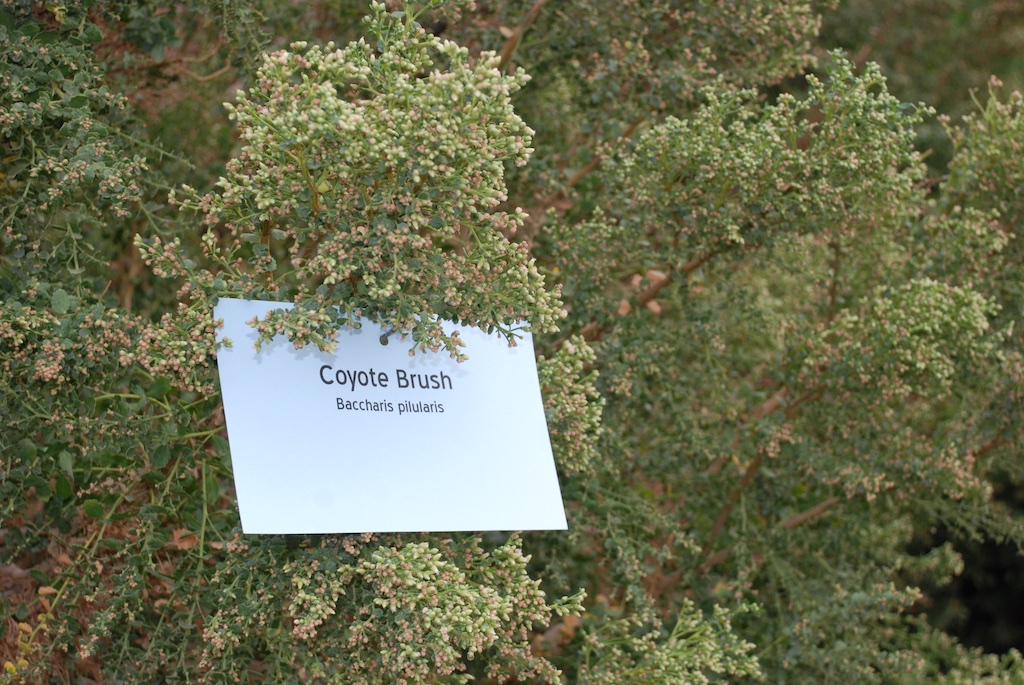 Plants along the half mile hedgerow had been labeled for our benefit.
Plants along the half mile hedgerow had been labeled for our benefit.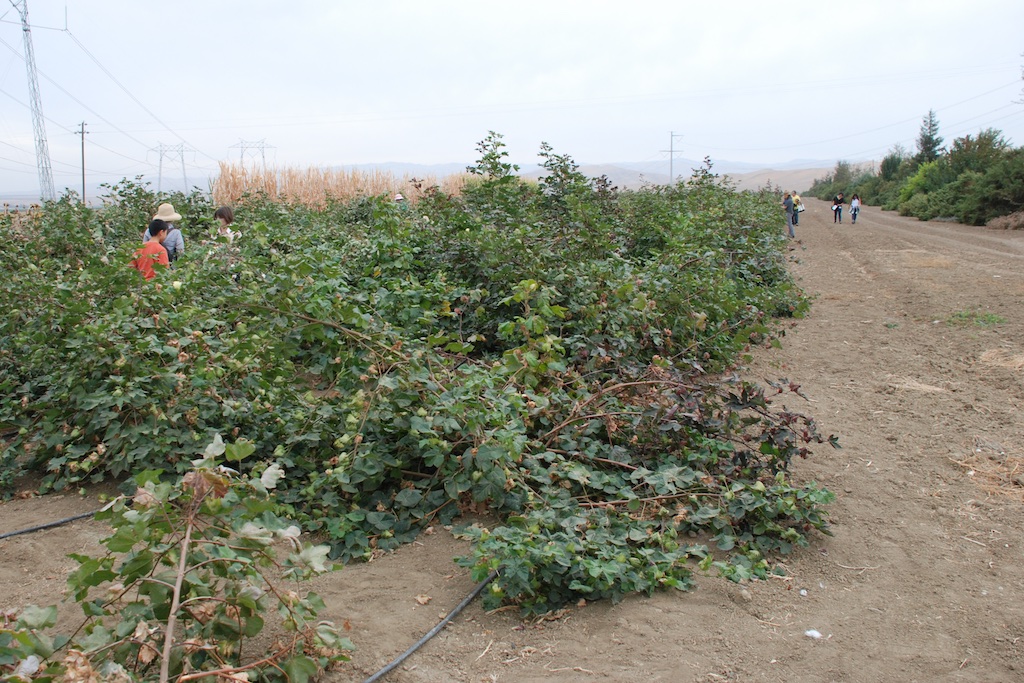 I got carried away walking up the hedgerow (right in this photo) and missed hearing the farmer speak about the patch of colored cotton on the other side. I think that it may have planted for our benefit because it is just a small area and it was filled with all varieties of cotton that have been parts of the breeding work that these farmers have been doing over the years.
I got carried away walking up the hedgerow (right in this photo) and missed hearing the farmer speak about the patch of colored cotton on the other side. I think that it may have planted for our benefit because it is just a small area and it was filled with all varieties of cotton that have been parts of the breeding work that these farmers have been doing over the years. 


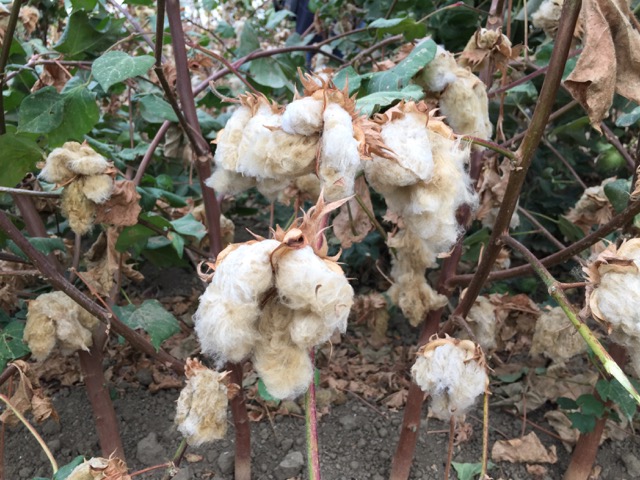 We were given bags and were able to pick as much cotton as we wanted to.
We were given bags and were able to pick as much cotton as we wanted to.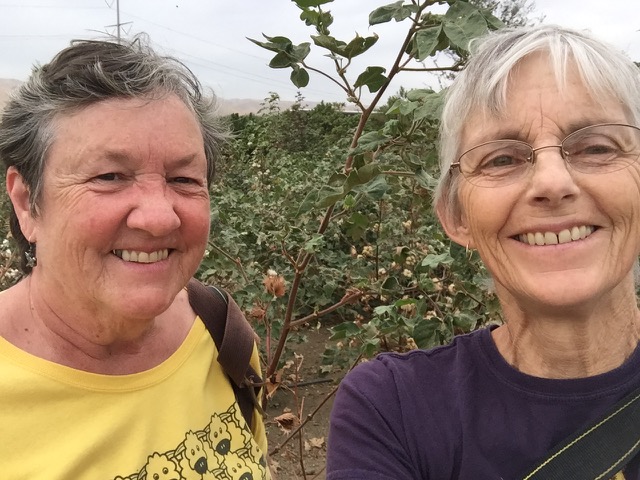
 This is Dona and me back on the bus. The tour ended about 5 and we drove home. This was a full day and I thoroughly enjoyed seeing this part of the valley up close and learning about the SCP and cotton farming in general.
This is Dona and me back on the bus. The tour ended about 5 and we drove home. This was a full day and I thoroughly enjoyed seeing this part of the valley up close and learning about the SCP and cotton farming in general. This is the cotton that was packed into my ziplock bag. My goal is to spin and weave it before the next tour.
This is the cotton that was packed into my ziplock bag. My goal is to spin and weave it before the next tour.